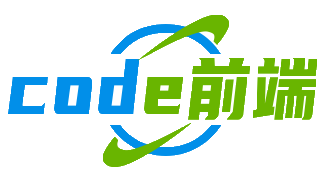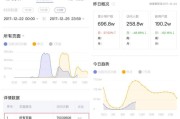Flutter控件的Stack(复合布局组件,常与Positioned组件配合使用)
Stack组件相当于Android布局中的frame布局。它是一种组件覆盖组件的分层布局,通常与 Positioned 组件结合使用。它的构造方式如下:
Stack({
Key key,
//子控件的对齐方式
this.alignment = ,
//文本的方向
this.textDirection,
//子控件的填充方式
this.fit = ,
//子控件超出父控件时候的处理
this.overflow = ,
List children = const [],
})
你能在下图中看到它是使用Stack布局实现的吗?这种布局有很多用途,例如头像上的昵称和电话号码;遮罩效果等。
渲染
![]()
让我们仔细看看它本身的属性。
alignment
该属性与Container控件的对齐属性相同。具体介绍在Flutter控制容器入口中。这里直观地给出了属性的功能。
Widget _alignStack()=>Container(
margin: (top: 10),
color: ,
constraints: (height: 180),
child: Stack(
//子控件的对齐方式是
alignment: ,
children: [
Container(alignment: ,
color: ,
child: Text("",style: TextStyle(color: ),),),
Container(
height: 100,
width: 100,
color: ,
),
Container(height: 60,width: 60,color: ,)
],
),
);
渲染
![]()
textDirection
字幕控件的文字方向有两种模式。
- 从左到右
- 从右到左
Widget _textLeftStack()=>Container(
margin: (top: 10),
color: ,
padding: (vertical: 10,horizontal: 10),
constraints: (height: 180),
child: Stack(
textDirection: ,
children: [
Text('left to rigt',style: TextStyle(color: ),),
],
),
);
渲染
![]()
Widget _textRightStack()=>Container(
margin: (top: 10),
constraints: (height: 180),
color: ,
padding: (horizontal: 10,vertical: 10),
child: Stack(
textDirection: ,
children: [
Text(' rigt to left',style: TextStyle(color: ),),
],
),
);
渲染
![]()
适合
子控件填充模式用于控制大小。由StackFit枚举类驱动。
- 单击最小的
- 单击最大的。
- Stack最顶层是->扩展->行,横向尽量大,纵向尽量小。取决于父控件
Widget _fitStack()=>Container(
color: ,
margin: (top: 10),
constraints: (height: 220),
child: Column(
mainAxisAlignment: ,
crossAxisAlignment: ,
children: [
Container(
margin: (top: 10),
constraints: (height: 60),
color: ,
child: Stack(
fit: ,
children: [
Container(
color: ,
child: Text('',style: TextStyle(color: ,fontSize: 20),),
),
],
),
),
Container(
margin: (top: 10),
constraints: (height: 60),
color: ,
child: Stack(
fit: ,
children: [
Container(
color: ,
child: Text('',style: TextStyle(color: ,fontSize: 20),),
),
],
),
),
Container(constraints: (height:60),
margin: (top: 10),
color: ,
child: Stack(
fit: ,
children: [
Container(
color: ,
child: Text('',
style: TextStyle(color: ,fontSize: 20),),
),
],
),
),
],
),
);
渲染
![]()
当子控件的内容超出Stack控件时,有两种模式来检查控件之外的内容是否被裁剪或可见。
- 可见,但会超过
- 裁剪
Widget _overflowVisibleStack()=>Container(
margin: (top: 10),
color: ,
constraints: (height: 40),
child: Stack(
overflow: ,
children: [
Positioned(
top: 15,
child: Text("Flutter 基础布局Widgets之Stack\nFlutter 基础布局Widgets之Stack",
style: TextStyle(color: ),),
),
],
),
);
Widget _overClipStack()=>Container(
margin: (top: 40),
color: ,
constraints: (height: 40),
child: Stack(
overflow: ,
children: [
Positioned(
top: 15,
child: Text("Flutter 基础布局Widgets之Stack\nFlutter 基础布局Widgets之Stack",
style: TextStyle(color: ),),
),
],
),
);
渲染
![]()
Positioned
Stack中用于控制子控件在布局中位置的组件。构造方式:
const Positioned({
Key key,
this.left,
this.top,
this.right,
this.bottom,
this.width,
this.height,
@required Widget child,
})
顾名思义,它从各个方向控制下属的位置。
class StackWidget1 extends StatelessWidget {
@override
Widget build(BuildContext context) {
return ConstrainedBox(
constraints: (),
child: new Stack(
alignment: , //指定未定位或部分定位widget的对齐方式
children: [
Container(
child: Text(
'positioned-null',
style: TextStyle(color: ),
),
color: ,
),
Positioned(
left: ,
child: Text('positioned-left'),
),
Positioned(
top: 18,
child: Text('positioned-top'),
),
Positioned(
bottom: 18,
child: Text('positioned-bottom'),
),
Positioned(
right: 18,
child: Text('positioned-right'),
),
],
),
);
}
}
渲染
![]()
版权声明
本文仅代表作者观点,不代表Code前端网立场。
本文系作者Code前端网发表,如需转载,请注明页面地址。
 code前端网
code前端网



发表评论:
◎欢迎参与讨论,请在这里发表您的看法、交流您的观点。